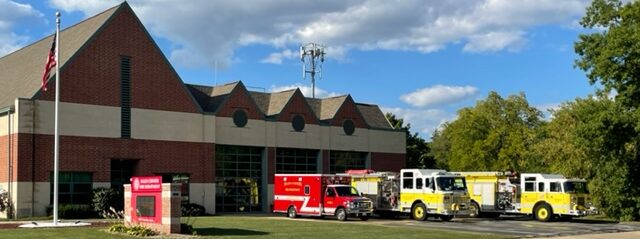
Half of Children Killed in Fires Are Under Age 5
USA Today (2/13, Sternberg) reports, “Children age 4 and younger, those least able to make their way to safety without help, account for roughly half of all childhood deaths and injuries suffered in fires,” according to a FEMA report set for release today. “Children younger than 5 made up 52% of the deaths of children younger than 16 in fires in 2007,” and “were 46% of the injuries that year.” The absence of “a working smoke detector has been linked with nearly 25% of fatal residential fires, though just 3% of homes do not have smoke alarms installed, the report says.” FEMA Administrator Fugate is quoted as saying that small children “need to be rescued. If the adults in the household don’t know what’s going on until it’s too late, they’re going to perish.” Noting a statement from Mark Shriver, chairman of the National Commission on Children and Disaster, that the numbers are getting worse, USA Today adds that to combat the problem, “Fugate says, FEMA, the commission and more than two-dozen other organizations will launch a national campaign today to promote fire safety. The federal agency will post safety tips and other information at www.ready.gov/kidsfiresafety. FEMA also is promoting a dialogue on Twitter, using the hashtag #kidsfiresafety.”
As part of this call to action, we are encouraging families to take simple steps now to prevent fires and to protect children. We are also encouraging our many partners, across the fire and emergency medical services, public health, emergency management and many other fields to help us get the message out. To spread the word, we are launching the following online tools and resources:
- An updated website with key tips and resources for how to protect children and the entire family from residential fires;
- A Face Book page with updated Safety information that will link to this website and resources;
- These updated tools will offer tips for how to prevent the two leading causes of fires during the winter months: heating and cooking.
Heating
The high cost of home heating fuels and utilities has caused many Americans to search for alternate sources of home heating. The use of wood burning stoves is growing and space heaters are selling rapidly. These heating sources are a major contributing factor in residential fires and may put children at risk. Many of these fires can be prevented.
What you can do:
- Never use your oven to heat your home.
- Never allow children to play near a fireplace, wood burning stove, space heater, or other heating sources. Establish a 3 foot safety zone around all heat sources.
- Have your chimney or wood stove inspected and cleaned annually by a certified chimney specialist, and use a metal mesh screen when burning a fire in your fireplace.
- Follow manufacturer instructions when alternative heat sources such as wood stoves and kerosene heaters are used. Kerosene heaters may be prohibited by local fire marshals.
- Use fire-resistant materials on walls around wood stoves. Store fuels in proper containers, and keep them out of the reach of children and away from combustible materials.
Cooking
Many families gather in the kitchen to spend time together, but it can be one of the most hazardous rooms in the house if you don’t practice safe cooking behaviors. Cooking is the leading cause of reported residential fires and fire injuries in the United States.
What you can do:
- Young children are at high risk of being burned by hot food and liquids. Keep children away from cooking areas by enforcing a “child-free zone” of 3 feet (1 meter) around the stove and microwave.
- When young children are present, use the stove’s back burners whenever possible.
- Never hold a child while cooking, drinking, or carrying hot foods or liquids.
- Keep young children at least 3 feet (1 meter) away from any place where hot food or drink is being prepared or carried, such as around the microwave. Keep hot foods and liquids away from table and counter edges.
- Teach children that hot things can burn them.
- When children are old enough, teach them to cook safely. Supervise them closely.
Be Prepared
In at least 23 percent of all fatal residential fires, no smoke alarms were present. Keep your family safe, by installing a smoke and carbon monoxide alarm on every level of your home and inside and outside sleeping areas. Test smoke alarm batteries every month and change them at least once a year. In addition, make an escape plan with a common meeting place and call 911 once you are safely outside. Practice the escape plan with your family; plan a home fire drill on a regular basis.
Families can further reduce their risk of injury or death by also installing residential sprinkler systems.
Practice safe fire behaviors and know what to do in an emergency to give your family extra seconds to escape. For more information on fire-safe behaviors and activities, visit www.ready.gov and www.usfa.dhs.gov.
